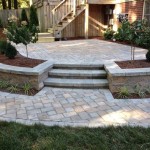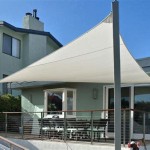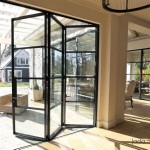Bringing The Charm of the Past to Your Patio
The allure of historical design transcends mere nostalgia; it represents a tangible connection to bygone eras, offering a sense of continuity and timeless elegance. Applying this aesthetic to a patio space involves carefully curating elements that evoke specific periods or styles, transforming an ordinary outdoor area into a captivating retreat with historical resonance. The process demands thoughtful consideration of materials, furnishings, landscaping, and architectural details, all working in harmony to create an authentic and inviting atmosphere.
Understanding the nuances of different historical design movements is crucial for achieving a cohesive and convincing result. From the rustic simplicity of a farmhouse patio to the ornate sophistication of a Victorian garden, each style possesses distinct characteristics that must be accurately replicated. Ignoring these details can lead to a disjointed and unconvincing aesthetic, undermining the overall goal of transporting the patio back in time.
This article explores the various facets of bringing historical charm to a patio, outlining key considerations and providing practical advice for successfully integrating elements from past eras into a modern outdoor space. This involves understanding the historical context, selecting appropriate materials, choosing complementary furnishings, and paying meticulous attention to detail in all aspects of the design process.
Selecting a Historical Style and Period
The initial step in crafting a historically inspired patio is selecting the specific era or style to emulate. This decision dictates the overall aesthetic and influences the choice of materials, furnishings, and landscaping. Popular options include Victorian, Edwardian, Mid-Century Modern, Rustic Farmhouse, and Mediterranean styles, each offering a unique set of visual cues and design principles.
For instance, a Victorian patio typically features ornate wrought iron furniture, intricate tile work, lush floral arrangements, and perhaps even a small fountain or birdbath. The color palette tends to be rich and vibrant, with jewel tones and deep greens dominating the scene. In contrast, a Mid-Century Modern patio emphasizes clean lines, geometric shapes, and the use of materials like concrete, teak wood, and colorful plastic. Furniture is often low-slung and functional, with a focus on outdoor living and entertaining.
A Rustic Farmhouse patio, on the other hand, prioritizes natural materials, such as reclaimed wood, stone, and woven textiles. The color palette is muted and earthy, with shades of brown, beige, and gray. Furniture tends to be simple and sturdy, often incorporating antique or repurposed items. The landscaping is typically informal and naturalistic, with wildflowers, herbs, and vegetable gardens playing a prominent role. A Mediterranean-style patio often incorporates stucco walls, terracotta tiles, and vibrant colors like blue, yellow, and orange. Olive trees, grapevines, and citrus plants are common landscaping choices, creating a sun-drenched and inviting atmosphere.
The selection process should be guided by personal preference, the existing architectural style of the home, and the desired functionality of the patio. It is also important to consider the local climate and environmental conditions, as some styles may be better suited to certain regions than others. Thorough research and careful planning are essential for ensuring that the chosen style is both aesthetically pleasing and practically viable.
Once a style has been selected, further research is needed to understand its specific characteristics and design principles. This may involve studying historical images, reading books and articles on the subject, and visiting museums or historic sites that showcase examples of the chosen style. This research will provide valuable insights into the nuances of the style and help to inform the design process.
Choosing Authentic Materials and Finishes
The authenticity of a historically inspired patio hinges significantly on the selection of appropriate materials and finishes. Using modern substitutes that mimic the appearance of historical materials can often fall short, lacking the texture, patina, and overall character of the real thing. Whenever possible, sourcing genuine antique materials or high-quality reproductions is crucial for achieving a convincing and believable result.
For example, a Victorian patio would ideally feature authentic wrought iron furniture, rather than modern steel pieces that are merely painted to look like wrought iron. Similarly, using reclaimed brick or stone for paving can add a sense of age and authenticity that is difficult to replicate with new materials. The choice of paint colors is also critical, as using contemporary shades that were not available during the chosen historical period can detract from the overall aesthetic.
When sourcing materials, it is important to consider their durability and suitability for outdoor use. Some historical materials, such as certain types of wood or stone, may require special treatment or maintenance to withstand the elements. It is also essential to ensure that the materials are sourced responsibly and sustainably, particularly when using reclaimed or antique items.
The finish of the materials is just as important as the materials themselves. A weathered or distressed finish can add a sense of age and character, while a polished or pristine finish may be more appropriate for certain styles. The choice of finish should be carefully considered in relation to the overall aesthetic and the desired level of authenticity. Researching the historical finishing techniques and using similar methods can significantly enhance the overall effect.
Consider the use of reclaimed materials. Using reclaimed wood, for example, can contribute to the rustic charm of a farmhouse patio. Similarly, incorporating antique tiles or salvaged architectural elements can add a unique and historically accurate touch to a Victorian or Mediterranean patio. These materials often tell a story and add a layer of depth and character that is impossible to replicate with new products.
Furnishing and Decorating with Historical Accuracy
Selecting furniture and decorative elements that are consistent with the chosen historical style is paramount. This involves researching the types of furniture that were commonly used during the period and sourcing pieces that are either authentic antiques or high-quality reproductions. The arrangement of the furniture and the addition of appropriate accessories can further enhance the historical authenticity of the patio.
For a Victorian patio, consider incorporating pieces like wrought iron benches, ornate tables, and wicker chairs. Adding details such as lace doilies, porcelain figurines, and antique lanterns can further enhance the Victorian aesthetic. The use of potted plants in decorative urns or planters is also a common feature of Victorian gardens and patios.
A Mid-Century Modern patio might feature low-slung furniture made from teak wood, colorful plastic chairs, and geometric-patterned rugs. Consider adding accessories like vintage ashtrays, retro-style lighting fixtures, and abstract sculptures. The placement of plants in simple, geometric containers can also contribute to the Mid-Century Modern aesthetic.
A Rustic Farmhouse patio could include wooden benches, rocking chairs, and a farmhouse table made from reclaimed wood. Add accessories such as woven blankets, vintage lanterns, and galvanized metal containers. The use of potted herbs and wildflowers can further enhance the rustic charm of the space.
The choice of textiles, such as cushions, pillows, and throws, is also important. Select fabrics that are appropriate for the chosen historical period and style. For example, a Victorian patio might feature velvet or silk cushions, while a Mid-Century Modern patio might incorporate bold geometric patterns on durable outdoor fabrics. Consider adding personal touches, such as family heirlooms or antique artifacts, to further personalize the space and enhance its historical authenticity.
Lighting plays a crucial role in setting the mood and enhancing the historical ambiance of the patio. Consider using antique lanterns, string lights, or vintage-style outdoor fixtures to create a warm and inviting atmosphere. The placement of lighting should be carefully considered to highlight key architectural features and create a sense of depth and dimension.
Maintaining consistency in design also applies to smaller details. Consider the type of tableware, serving dishes, and even the music played in the background. All these contribute to the overall experience and help to transport guests to the chosen historical period. Paying attention to these small details can make a significant difference in the overall impact of the patio.
Bringing the charm of the past to a patio space is a meticulous process that requires careful planning, thorough research, and a keen eye for detail. By selecting a specific historical style, choosing authentic materials and finishes, and furnishing and decorating with historical accuracy, individuals can transform an ordinary outdoor area into a captivating retreat with timeless elegance. The effort involved is rewarded with a space that not only provides enjoyment but also serves as a tangible connection to history, enriching the lives of those who experience it.

Outdoor Lounge How One Piece Can Pull Your Patio Decor Together

Transform Your Patio With These Mediterranean Courtyard Design Tips

Techo Bloc Antika Pavers Bring Random Charm To Your Hardscape Project Seattle Landscaping Hardscaping Patio Walkway Driveway Outdoor Fireplaces Walls

What Is A Pergola And It Used For Hansø Home
The Dos And Don Ts Of Designing A Bold Outdoor Space Whether Terrace Porch Or Patio Mansion Global

Susan Branch

Inspiration To Design Your Own English Cottage Garden

The Wharf House Old World Charm By Sea Montego Bay Vrbo

20 Front Step Decor Ideas That Will Rid Your Entry Of The Blahs

Old Nags Head Charm At It S Best Vrbo
Related Posts








